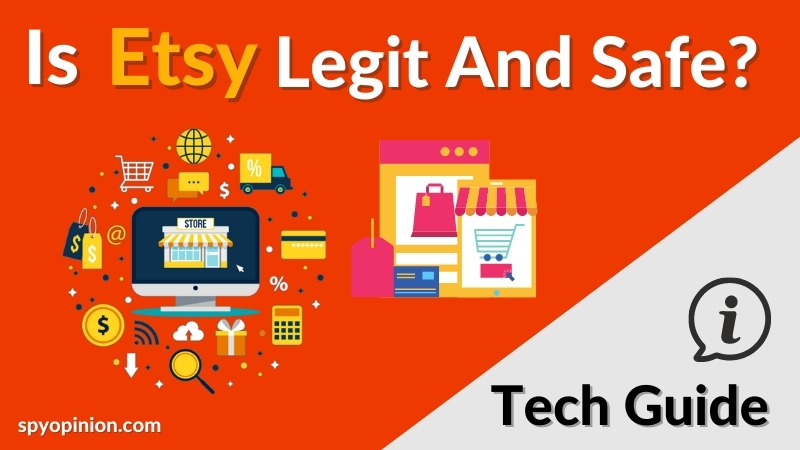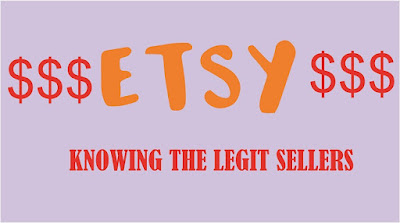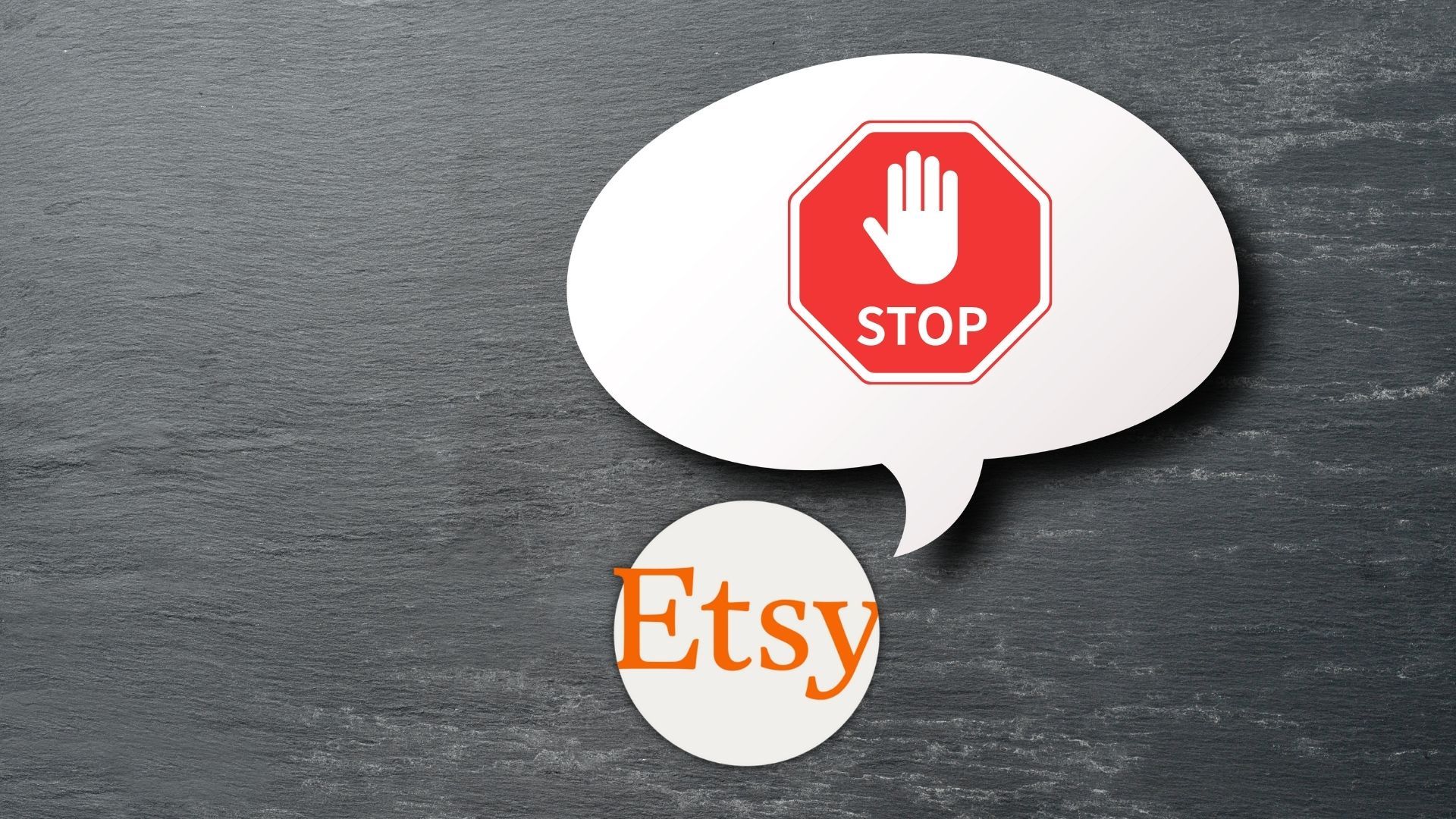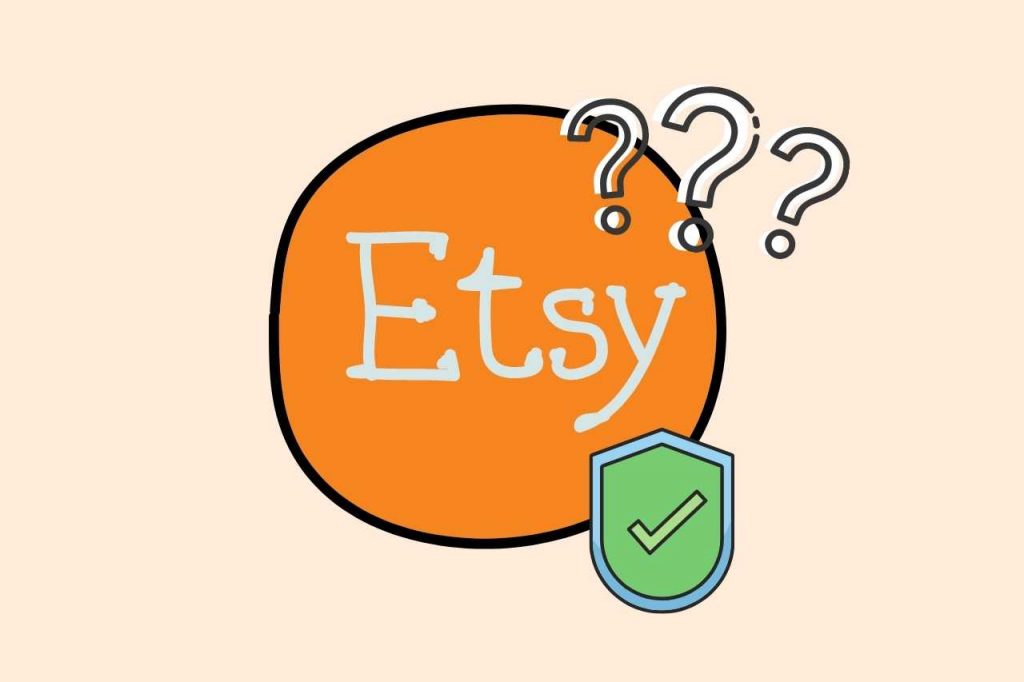What Makes an Online Marketplace Trustworthy?
When it comes to online shopping, trust is a crucial factor in determining whether a marketplace is legitimate or not. With the rise of e-commerce, online marketplaces have become increasingly popular, offering a wide range of products and services to consumers. However, not all online marketplaces are created equal, and some may pose risks to buyers. So, what makes an online marketplace trustworthy? In this article, we’ll explore the key factors that contribute to an online marketplace’s legitimacy, with a focus on Etsy, a popular online marketplace for handmade and vintage items.
A trustworthy online marketplace typically has secure payment processing, seller verification, and customer reviews. Secure payment processing ensures that buyers’ financial information is protected, while seller verification helps to prevent scams and ensures that sellers are accountable for their products. Customer reviews, on the other hand, provide valuable feedback from other buyers, helping to build trust and credibility.
Etsy, in particular, has implemented various measures to ensure a trustworthy shopping experience. With over 90 million active buyers and sellers, Etsy has established itself as a reputable online marketplace. However, as with any online platform, there may be concerns about its legitimacy. Is Etsy a legit site? In this article, we’ll delve deeper into Etsy’s features and policies to help answer this question.
One of the key factors that contribute to Etsy’s legitimacy is its secure payment processing. Etsy offers various payment options, including PayPal, credit cards, and bank transfers. Additionally, Etsy has a robust seller verification process, which includes requirements such as providing identification and proof of address. This helps to ensure that sellers are genuine and accountable for their products.
Customer reviews are also an essential aspect of Etsy’s legitimacy. Buyers can leave reviews and ratings for sellers, helping to build trust and credibility. With millions of reviews on the platform, buyers can make informed decisions about their purchases. Furthermore, Etsy’s customer service team is available to assist with any issues or concerns, providing an added layer of support and trust.
While Etsy has implemented various measures to ensure a trustworthy shopping experience, there may still be concerns about its legitimacy. In the next section, we’ll explore how to spot a legitimate online seller on Etsy, providing tips and advice for buyers.
How to Spot a Legitimate Online Seller on Etsy
When shopping on Etsy, it’s essential to identify trustworthy sellers to ensure a safe and successful transaction. With millions of active sellers on the platform, it can be challenging to distinguish between legitimate and illegitimate sellers. However, by following some simple tips, buyers can increase their chances of finding a reliable seller.
One of the most effective ways to spot a legitimate online seller on Etsy is to check their feedback ratings. Sellers with high feedback ratings, typically above 95%, are more likely to be trustworthy. Additionally, buyers should read reviews from other customers to get an idea of the seller’s product quality, communication, and shipping times.
Another way to identify a legitimate seller is to look for sellers with a high number of sales. Sellers who have made a significant number of sales are more likely to be experienced and reputable. Furthermore, buyers should check the seller’s shop policies, including their refund and shipping policies, to ensure they align with their expectations.
For example, let’s say a buyer is looking for a handmade jewelry seller on Etsy. They come across a seller with a 99% feedback rating and over 1,000 sales. The seller’s shop policies clearly outline their refund and shipping procedures, and they have a responsive and helpful customer service team. In this case, the buyer can feel more confident in their purchase decision.
Similarly, when shopping for vintage clothing on Etsy, buyers should look for sellers with a strong track record of sales and positive feedback. They should also check the seller’s product descriptions and photos to ensure they accurately represent the item. By doing their research and due diligence, buyers can increase their chances of finding a legitimate and trustworthy seller on Etsy.
While these tips can help buyers identify legitimate sellers on Etsy, it’s essential to remember that no online marketplace is completely immune to scams or illegitimate sellers. However, by being aware of the potential risks and taking steps to mitigate them, buyers can have a safe and successful shopping experience on Etsy.
In the next section, we’ll take a closer look at Etsy’s seller verification process and how it helps to ensure a safe and trustworthy shopping experience for buyers.
Etsy’s Seller Verification Process: A Closer Look
Etsy’s seller verification process is a crucial aspect of ensuring a safe and trustworthy shopping experience for buyers. The process is designed to verify the identity and legitimacy of sellers, providing an added layer of security and confidence for buyers.
To become a verified seller on Etsy, sellers must meet certain requirements, including providing identification and proof of address. This information is used to verify the seller’s identity and ensure that they are a legitimate business or individual. Additionally, sellers must agree to Etsy’s terms of service and policies, which outline the expectations for seller behavior and conduct.
The benefits of verification for sellers are numerous. Verified sellers are more likely to attract buyers, as they are seen as trustworthy and legitimate. Additionally, verified sellers are eligible for certain benefits, such as increased visibility in search results and access to Etsy’s payment processing system.
For buyers, the seller verification process provides an added layer of security and confidence. When shopping on Etsy, buyers can look for the “verified seller” badge, which indicates that the seller has met Etsy’s verification requirements. This badge provides assurance that the seller is legitimate and trustworthy, reducing the risk of scams or fraudulent activity.
In addition to the verification process, Etsy also provides a range of tools and resources to help sellers build trust with buyers. For example, sellers can use Etsy’s messaging system to communicate with buyers, providing a secure and transparent way to discuss orders and resolve any issues that may arise.
Overall, Etsy’s seller verification process is an important aspect of ensuring a safe and trustworthy shopping experience for buyers. By verifying the identity and legitimacy of sellers, Etsy provides an added layer of security and confidence, making it easier for buyers to find and purchase from trustworthy sellers.
In the next section, we’ll take a closer look at Etsy’s payment and shipping policies, including the various payment options available to buyers and the estimated delivery times for different shipping methods.
Understanding Etsy’s Payment and Shipping Policies
Etsy’s payment and shipping policies are designed to provide a secure and reliable shopping experience for buyers. The platform offers a range of payment options, including credit cards, PayPal, and bank transfers. This flexibility allows buyers to choose the payment method that best suits their needs.
In terms of shipping, Etsy provides estimated delivery times for different shipping methods. This information helps buyers plan and track their purchases, ensuring that they receive their items in a timely manner. Additionally, Etsy’s shipping policies require sellers to provide accurate and detailed information about their shipping practices, including estimated delivery times and shipping costs.
Etsy’s payment processing system is also designed to protect buyers. The platform offers a secure payment processing system that encrypts sensitive information, such as credit card numbers and personal data. This ensures that buyers’ financial information is protected and secure.
Furthermore, Etsy’s payment policies require sellers to provide clear and accurate information about their payment terms, including any additional fees or charges. This transparency helps buyers understand the total cost of their purchase and avoid any unexpected surprises.
In addition to these policies, Etsy also offers a range of tools and resources to help sellers manage their shipping and payment processes. For example, sellers can use Etsy’s shipping labels and packaging materials to streamline their shipping process and reduce costs.
Overall, Etsy’s payment and shipping policies are designed to provide a secure and reliable shopping experience for buyers. By offering a range of payment options, estimated delivery times, and secure payment processing, Etsy helps to build trust and confidence with its buyers.
In the next section, we’ll explore real-life examples of successful transactions on Etsy, including testimonials from satisfied buyers and sellers. We’ll also highlight the unique features of Etsy that facilitate these positive experiences.
Real-Life Examples of Successful Transactions on Etsy
Etsy is home to millions of successful transactions every year, with buyers and sellers from all over the world coming together to buy and sell unique, handmade, and vintage items. In this section, we’ll share some real-life examples of successful transactions on Etsy, highlighting the unique features of the platform that facilitate these positive experiences.
One example is the story of Emily, a buyer from California who purchased a handmade wedding dress from a seller in New York. Emily was thrilled with the dress, which was made to her exact specifications, and praised the seller for their excellent communication and customer service. The seller, in turn, was grateful for the opportunity to showcase their skills and creativity on Etsy.
Another example is the story of David, a seller from the UK who sold a vintage watch to a buyer in Australia. David was impressed by the ease of use of Etsy’s payment and shipping systems, which made it easy for him to send the watch to the buyer quickly and efficiently. The buyer, in turn, was thrilled with the watch, which was exactly as described, and praised David for his excellent packaging and communication.
These examples illustrate the unique features of Etsy that facilitate successful transactions, including the ability to communicate directly with sellers, the use of secure payment and shipping systems, and the emphasis on handmade and vintage items. By providing a platform for buyers and sellers to come together, Etsy enables people to buy and sell unique and special items that they might not find elsewhere.
In addition to these examples, Etsy also provides a range of tools and resources to help buyers and sellers succeed on the platform. For example, Etsy’s teams feature allows buyers to connect with other buyers who share similar interests, while Etsy’s forums provide a space for sellers to share tips and advice on how to succeed on the platform.
Overall, Etsy’s focus on community, creativity, and customer service has enabled millions of successful transactions to take place on the platform. By providing a unique and supportive environment for buyers and sellers to come together, Etsy has established itself as a leader in the world of e-commerce.
In the next section, we’ll address some common concerns and complaints about Etsy, providing a balanced view of the pros and cons of shopping on the platform.
Common Concerns and Complaints about Etsy: A Balanced View
While Etsy is a popular and well-established online marketplace, it is not immune to concerns and complaints from buyers and sellers. In this section, we’ll address some of the most common issues that have been raised about Etsy, providing a balanced view of the pros and cons of shopping on the platform.
One of the most common concerns about Etsy is the quality of customer service. Some buyers have reported difficulty in getting help from Etsy’s customer service team, while others have praised the team’s responsiveness and helpfulness. To address this issue, Etsy has implemented a range of measures, including a comprehensive help center and a team of dedicated customer support specialists.
Another concern that has been raised about Etsy is the issue of shipping delays. Some buyers have reported experiencing delays in receiving their orders, while others have praised the platform’s shipping policies and procedures. To address this issue, Etsy has implemented a range of measures, including estimated delivery times and shipping labels, to help sellers manage their shipping processes more effectively.
In addition to these concerns, some buyers have also raised issues about the quality of products sold on Etsy. While the platform has a reputation for showcasing unique and handmade items, some buyers have reported receiving low-quality or defective products. To address this issue, Etsy has implemented a range of measures, including a comprehensive review system and a team of dedicated quality control specialists.
Despite these concerns, many buyers and sellers have reported positive experiences on Etsy. The platform’s focus on community and customer service has helped to build trust and loyalty among its users, and its commitment to showcasing unique and handmade items has helped to establish it as a leader in the world of e-commerce.
Overall, while Etsy is not perfect, it is a legitimate and trustworthy online marketplace that offers a unique and valuable shopping experience for buyers and sellers. By addressing the concerns and complaints that have been raised about the platform, Etsy has demonstrated its commitment to providing a safe and reliable shopping environment for all its users.
In the next section, we’ll provide a step-by-step guide on how to resolve disputes on Etsy, including how to contact customer service, file a claim, and negotiate with sellers.
How to Resolve Disputes on Etsy: A Step-by-Step Guide
Despite Etsy’s best efforts to ensure a safe and trustworthy shopping experience, disputes can still arise between buyers and sellers. In this section, we’ll provide a step-by-step guide on how to resolve disputes on Etsy, including how to contact customer service, file a claim, and negotiate with sellers.
Step 1: Contact Customer Service
If a buyer or seller has a concern or issue with a transaction, the first step is to contact Etsy’s customer service team. Etsy provides a comprehensive help center with answers to frequently asked questions, as well as a team of dedicated customer support specialists who can assist with resolving disputes.
Step 2: File a Claim
If a buyer or seller is unable to resolve a dispute through customer service, they may need to file a claim. Etsy provides a claim process that allows buyers and sellers to resolve disputes in a fair and timely manner. To file a claim, buyers or sellers can go to the “Help” section of their Etsy account and follow the prompts.
Step 3: Negotiate with Sellers
In some cases, disputes may be resolved through negotiation between the buyer and seller. Etsy provides a messaging system that allows buyers and sellers to communicate directly with each other. By using clear and respectful language, buyers and sellers can often resolve disputes in a mutually beneficial way.
Emphasizing the Importance of Clear Communication and Respectful Dialogue
Clear communication and respectful dialogue are essential for resolving disputes on Etsy. By using “I” statements and avoiding blame or aggression, buyers and sellers can create a positive and constructive dialogue that helps to resolve disputes in a fair and timely manner.
Conclusion
Resolving disputes on Etsy requires a combination of clear communication, respectful dialogue, and a willingness to work together to find a mutually beneficial solution. By following the steps outlined in this guide, buyers and sellers can resolve disputes in a fair and timely manner, and ensure a positive and successful transaction on Etsy.
In the next section, we’ll summarize the main points discussed in this article and provide a final verdict on Etsy’s legitimacy.
Conclusion: Is Etsy a Legit Site?
After a thorough examination of Etsy’s features, policies, and user experiences, it is clear that the platform has established itself as a legitimate online marketplace. With a strong focus on secure payment processing, seller verification, and customer reviews, Etsy provides a trustworthy environment for buyers to discover unique, handmade, and vintage items. While no online marketplace is perfect, and some concerns and complaints do exist, Etsy’s commitment to transparency, communication, and dispute resolution sets it apart from other platforms.
As a buyer, it is essential to remain vigilant and take steps to ensure a smooth transaction, such as researching sellers, reading reviews, and understanding payment and shipping policies. By doing so, buyers can minimize the risk of disputes and maximize their chances of a positive experience on Etsy. With its vast array of products, passionate community, and dedication to customer satisfaction, Etsy has earned its reputation as a go-to destination for those seeking one-of-a-kind items.
So, is Etsy a legit site? The answer is a resounding yes. With its robust verification process, secure payment options, and emphasis on customer feedback, Etsy has established itself as a trustworthy platform for buyers and sellers alike. Whether you’re a seasoned online shopper or just starting to explore the world of e-commerce, Etsy is definitely worth considering. By understanding the platform’s features, policies, and best practices, buyers can unlock the full potential of Etsy and enjoy a safe, enjoyable, and rewarding shopping experience.






